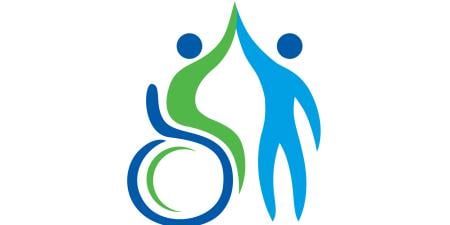Case
Amelia, a third-year medical student who is doing her obstetrics and gynecology rotation, is spending a day in a university abortion clinic. After she has seen several patients and observed a couple of procedures, the attending physician, Dr. K, hands Amelia a chart filled with background information and a handout listing the information she will need to gather and instructs her, “Amelia, please go learn this patient’s story and see what kinds of question she has about the procedure.”
The first thing Amelia notices when she opens the chart are the words “trisomy 21.” She knows well what this means—in addition to her medical training, she has an adult brother with Down syndrome. As she continues to read, she learns that the woman, Victoria, is 33 years old and is 12 weeks pregnant. Victoria has had a long battle with infertility because she has mosaic Turner’s syndrome. She has had seven miscarriages but has a one-year-old son at home.
At eight weeks gestation, Victoria had an abdominal ultrasound that showed thickening of the nuchal fold. She subsequently had cell-free fetal DNA testing which indicated she had a high chance of having a child with Down syndrome. Amelia wonders what kind of counseling Victoria received prior to arriving in the abortion clinic, particularly since she has not had a true diagnostic test for Down syndrome, such as a chorionic villus sample, and there were no notes in her health record from any genetic counseling sessions.
Amelia takes a deep breath and knocks on the patient’s door. Inside the room, she finds a teary-eyed woman, sitting and holding hands with her husband. When Amelia asks Victoria about her story, she explains, “We were so happy to be pregnant again after having so many miscarriages. It was devastating to learn about the Down syndrome. We just...can’t imagine putting that kind of burden on our family.”
Amelia responds, “I’m sorry to hear that you’ve been through so much. I hope that we can provide the support you need.” She goes on, “Do you feel as though you have received adequate information about Down syndrome?” Victoria nods, tears streaming down her cheeks; her husband stares at the floor.
Victoria seems to regard the cell-free DNA test as diagnostic of Down syndrome; this worries Amelia, particularly since it seems that she has not received any counseling. She’s also concerned that Victoria’s and her husband’s decision to abort might not be an informed one. Amelia feels some obligation to speak up on behalf of the often-underestimated and undervalued population of people with Down syndrome. She wonders whether to speak to Dr. K and to Victoria and her husband about her concerns, and she wonders what to say.
Commentary
In 2007, the American College of Obstetricians and Gynecologists (ACOG) recommended that all pregnant women, regardless of age, be offered prenatal screening and diagnostic testing for Down syndrome [1]. While Down syndrome can be suspected prenatally based on serologic screening, the diagnosis can only be definitively made using chorionic villus sampling (CVS) or amniocentesis. This distinction between screening and diagnosis applies to the newer cell-free fetal DNA screening, which, while more accurate, is still considered a screening test [2]. Screening tests can yield information about the probability of a potential condition but do not make clear whether the condition is present or determine the condition’s severity. So, for pediatricians and family practitioners—and eventually, with the advent of newer screening tests, obstetricians—to communicate effectively with prospective parents, it is essential to both communicate these points and clarify that the identification of trisomy 21 is not in any way a prognosis for the newborn with Down syndrome or for any family members’ future quality of life.
As with any major medical decisions involving risk assessment and probabilities, choices about how to proceed with a pregnancy following an unexpected diagnosis require that a patient be offered accurate, objective information about the condition of the fetus and about potential challenges. Such information should be free of value judgments so that patients can make decisions based, as much as possible, on their own values and desires. Most importantly, clinicians must set aside their own personal opinions and respect a patient’s autonomy.
The Problem of Bias
In this vignette, we find Victoria and her husband in apparent distress over recent test results indicating a high chance of having a child with Down syndrome and their decision about whether to terminate the pregnancy. To ensure that Victoria can make an informed decision that expresses her values, her clinicians are obligated to provide her with accurate, up-to-date information on Down syndrome that is as unbiased as possible. This means presenting all the potential options, including continuing the pregnancy, beginning arrangements for their child’s adoption, and terminating the pregnancy. While Victoria’s autonomy allows her to choose among several outcomes for her pregnancy, she cannot make an informed decision, and her autonomy would be undermined, if she received biased information from her clinicians.
How clinicians handle bias is an important consideration in this and similar cases. Clinicians’ behavior can sometimes be at odds with the ethical standard for clinicians to express respect for a patient’s autonomy. One anonymous survey of nearly 500 physicians who deliver a variety of prenatal diagnoses found that 23 percent of them urged termination and 14 percent urged continuation of the pregnancy [3]. These statistics suggest that many physicians draw prominently upon their own values when discussing patients’ medical options in this kind of situation.
Indeed, if a clinician in this case were to use the word “burden,” for example, to prognosticate about a parent’s quality of life with a child with Down syndrome, this would be an example of a kind of “urging” communication that would be inappropriate, unethical, and undermining of the patient’s autonomy. In the case, it appears that Victoria has not received information about what one might expect in the life of a person with Down syndrome. It also seems that she has not received information about adoption agencies that specialize in responding to newborns with special needs.
Additionally, we do not know what information, if any, Victoria received about the termination procedure itself, which is not without risk, or what to expect while recovering from an abortion. It is crucial for her physician to convey that abortion is not the only acceptable option for Victoria. Regardless of the physician’s personal opinion, Victoria’s decision should not be directed by the clinician in any way. Appropriate counseling, for example, should not include any expression of value judgments about Down syndrome as a diagnosis or suggest that one pregnancy outcome is ethically better than another.
Strategies for Communicating the Probability of Down Syndrome
One meta-study examined methods of delivering unexpected news of a prenatal diagnosis of Down syndrome that were preferred by expectant mothers [4]. Ethical guidance to be culled from that study is listed here:
- The preferred person to communicate the news is a health care professional who is knowledgeable about Down syndrome. This might not always be the obstetrician, so collaboration with other experts might be necessary.
- Respondents indicated a preference that the diagnosis be given as soon as possible, in the company of the expectant father or partner. This allows the potential diagnosis to be discussed with the expectant parents and any other support that they may wish to have with them in a thoughtful, confidential way. If necessary, this communication can be done over the telephone at a prearranged time.
- Respondents indicated they preferred up-to-date information about what Down syndrome is, its causes, and expectations for people with Down syndrome today. They also wanted to be offered opportunities to establish social connections with parents who have children with Down syndrome. These connections would provide social, cultural, emotional, and practical support and education for expectant parents in a way that a clinician likely could not.
- Respondents preferred that information be delivered in a nonjudgmental fashion, with respect for the parents’ feelings and personal decisions. Particularly, they preferred that sensitive and respectful language be used, rather than value-laden language (e.g., “I have bad news to share”) or offensive language (e.g., “mongolism,” “retarded”).
- Respondents indicated that they wanted to receive an up-to-date bibliography of resources about Down syndrome.
- Respondents indicated a preference that follow-up appointments be offered not only with an obstetrician but also with specialists who might help respond to their future questions (e.g., a genetic counselor, Down syndrome specialist, or cardiologist).
Roles of Good Counseling
In the case, it is not clear what, if any, counseling Victoria had prior to the current clinical encounter. Victoria has seemingly arrived at an abortion clinic without understanding her available options or even receiving a clear diagnosis. Amelia’s suspicion that Victoria did not receive adequate counseling might indeed be correct; far too many women who have had children with Down syndrome report dissatisfaction with the information and support provided after receiving the diagnosis [5].
Amelia’s attempt to discover whether Victoria has received any information on Down syndrome yields little. She’s right to ponder several questions. Was the information accurate and up-to-date? Has Victoria been offered connection with a local Down syndrome support group or Down syndrome center for more information? If indeed she has received that information, which questions about Down syndrome does she have at this point? Has she been given an opportunity to meet in person with a professional knowledgeable about Down syndrome so that she may ask those questions?
There are multiple points at which Victoria could have received prenatal counseling—perhaps at the time of the first ultrasound or, certainly, at the time of the cell-free fetal DNA testing, even though this test is not diagnostic. Long before she was sitting in the abortion clinic, she should have met with a genetic counselor, a Down syndrome specialist, or possibly even the parent of a child with Down syndrome. However, she is now at a point when the time for good counseling might have passed. But it’s still not too late for Amelia to introduce the importance of those opportunities.
What, If Anything, Should Amelia Say?
Amelia, too, must not engage in attempts to convince the patient to make a decision she views as best. Amelia’s wishes to be an advocate for those with Down syndrome is commendable and important. Both authors of this commentary can empathize with Amelia’s situation. We both have siblings with Down syndrome who have influenced many lives in remarkable ways. However, Amelia’s inclination to “speak up on behalf” of this population must be tempered by recalling that counseling discussions should always focus on the patient’s and family’s goals and not the clinician’s values. For Amelia to push Victoria toward one outcome would be unethical.
Amelia has an opportunity as a medical student to discuss her concerns with the attending physician. Although this might be difficult, it is important. It is reasonable for Amelia to share her concerns with the attending physician, not only because Dr. K is her faculty mentor, but also because Dr. K might not realize that Victoria has not received appropriate counseling. Dr. K could then demonstrate to Amelia how to counsel a patient, even at this late stage in Victoria’s decision-making process.
It should be noted that even if Amelia or Dr. K offers it, Victoria does have the option to decline further counseling and discussion regarding risk assessment or diagnosis. However, if Victoria wishes to discuss these things further, she should be provided with information that allows her to make an informed decision. Although it might be appropriate for Amelia to ask if Victoria has further questions or wishes to speak to anyone else regarding the chances of a diagnosis of Down syndrome, Victoria has the right to choose which information she would like to hear. At no time during her pregnancy should Victoria be forced to discuss the potential diagnosis or her pregnancy options against her will.
Even if she has refused counseling, Victoria retains a right to choose outcomes of her pregnancy that best align with her own family’s goals and values. Our role as clinicians is simply to provide patients and families with information to use in making their own decisions, without influencing them intentionally or unintentionally.
References
-
ACOG Committee on Practice Bulletins. ACOG practice bulletin no. 77: screening for fetal chromosomal abnormalities. Obstet Gynecol.2007;109(1):217-227.
-
American College of Obstetricians and Gynecologists (ACOG). Committee opinion no. 640: cell-free DNA screening for fetal aneuploidy. Obstet Gynecol. 2015;126(3):e31-e37.
-
Wertz DC. Drawing lines: notes for policymakers. In: Parens E, Asch A, eds. Prenatal Testing and Disability Rights. Washington, DC: Georgetown University Press; 2000:261-287.
-
Skotko BG, Kishnani PS, Capone GT; Down Syndrome Diagnosis Study Group. Prenatal diagnosis of Down syndrome: how best to deliver the news. Am J Med Genet A. 2009;149A(11): 2361-2367.
- Skotko B. Mothers of children with Down syndrome reflect on their postnatal support. Pediatrics. 2005;115(1):64-77.



